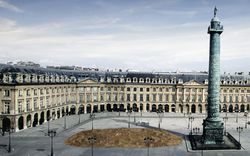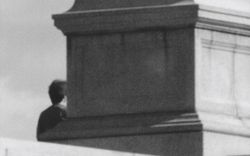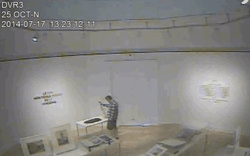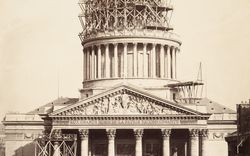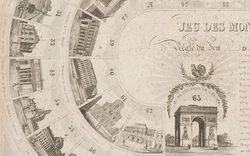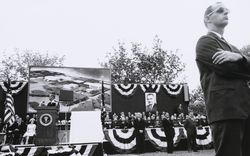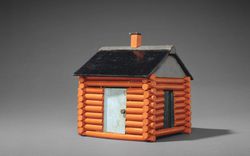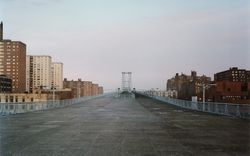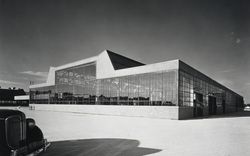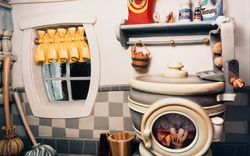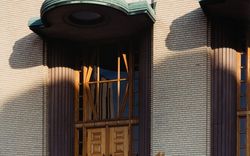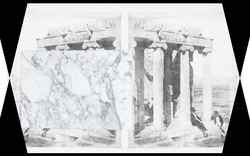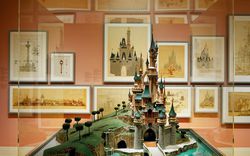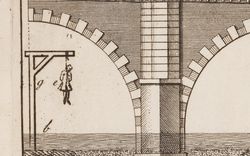Hang the Architect
Text by Nicolas Gaudreau
Batty Langley (1696–1751), the writer of numerous volumes on garden architecture, was familiar with the rhetorical power of images, and knew how to use them to make his name in the competitive world of architectural publishing. His most famous work, New Principles of Gardening (1728), made him a pioneer in the use of ruins in gardens and provides eloquent proof of the power of images. The tome’s plates depict colossal ruins whose monumental character is more than a little reminiscent of certain Piranesi etchings.
Another example of Langley’s taste for powerful images is found in A survey of Westminster Bridge as ‘tis now sinking into ruin … with remarks on the piratical method used for building the piers and a just estimate of the expence for which all their foundations might have been made secure with piles, until every stone, with which the bridge is built, was torn into atoms by the hungry teeth of devouring time… (1748). This work bears more relation to curiosities and genre literature than it does to scholarly or technical writing. In effect, it is a broadside in which Langley savages the builder of the new Westminster Bridge, Charles Labelye (1705–1781), an engineer of Swiss origin. Labelye had sparked an angry, xenophobic backlash when he was selected ahead of Langley and all other English bidders for the contract. When the piers started showing worrisome subsidence before workers had even finished building the bridge, Langley saw an irresistible opportunity to pounce.
The most unusual aspect of Langley’s diatribe is a simple drawing printed near the front of the book—its only illustration. The drawing portrayed the imagined hanging of the bridge’s incompetent architect. While such a drawing may seem out of place in an engineering book, it was in fact perfectly normal in an environment in which personal attacks were common currency. It is also possible to situate Langley’s cruel drawing in the wider context of English satirical drawing, of which the architect here appears to be an avid practitioner.
Nicolas Gaudreau was a recipient of a CCA Collection Research Grant in 2004 and contributed this text to our website in 2010.
